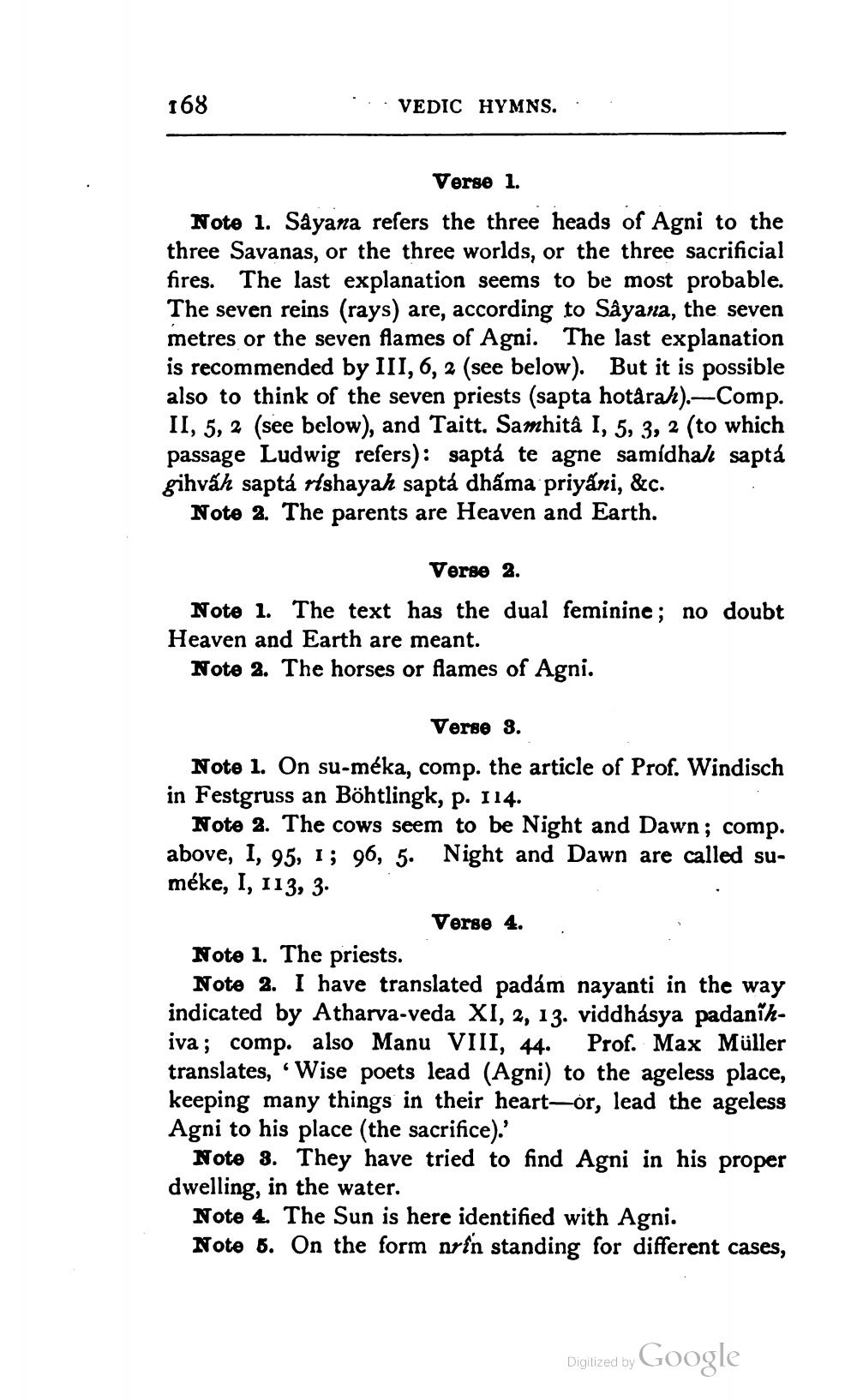________________
168
VEDIC HYMNS...
Verse 1. Note 1. Sayana refers the three heads of Agni to the three Savanas, or the three worlds, or the three sacrificial fires. The last explanation seems to be most probable. The seven reins (rays) are, according to Sâyana, the seven metres or the seven flames of Agni. The last explanation is recommended by III, 6,2 (see below). But it is possible also to think of the seven priests (sapta hotårah).-Comp. II, 5,2 (see below), and Taitt. Samhità I, 5, 3, 2 (to which passage Ludwig refers): saptá te agne samídhal sapta gihváh saptá rlshayah saptá dháma priyani, &c.
Note 2. The parents are Heaven and Earth.
Verse 2. Note 1. The text has the dual feminine; no doubt Heaven and Earth are meant.
Note 2. The horses or flames of Agni.
Verse 3.
Note 1. On su-méka, comp. the article of Prof. Windisch in Festgruss an Böhtlingk, p. 114.
Note 2. The cows seem to be Night and Dawn; comp. above, I, 95, 1; 96, 5. Night and Dawn are called suméke, I, 113, 3.
Verse 4. Note 1. The priests.
Note 2. I have translated padám nayanti in the way indicated by Atharva-veda XI, 2, 13. viddhásya padanihiva; comp. also Manu VIII, 44. Prof. Max Müller translates, Wise poets lead (Agni) to the ageless place, keeping many things in their heart-ór, lead the ageless Agni to his place (the sacrifice).'
Note 8. They have tried to find Agni in his proper dwelling, in the water.
Note 4. The Sun is here identified with Agni. Note 8. On the form nrin standing for different cases,
Digitized by Google




